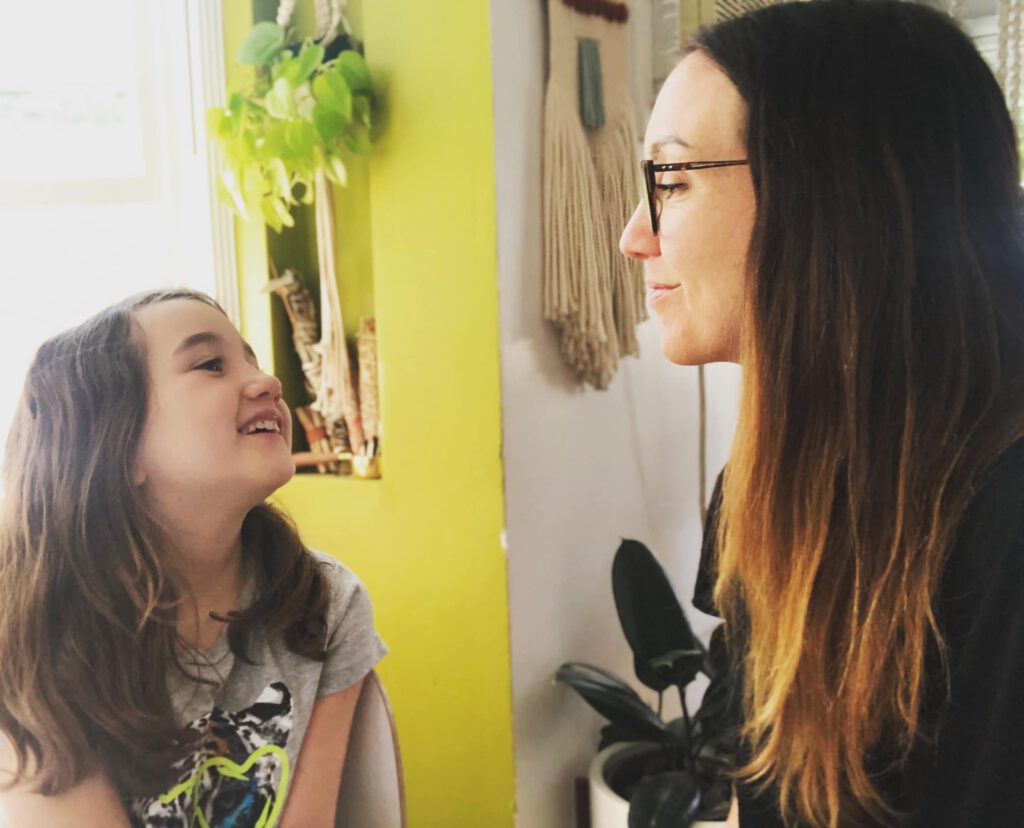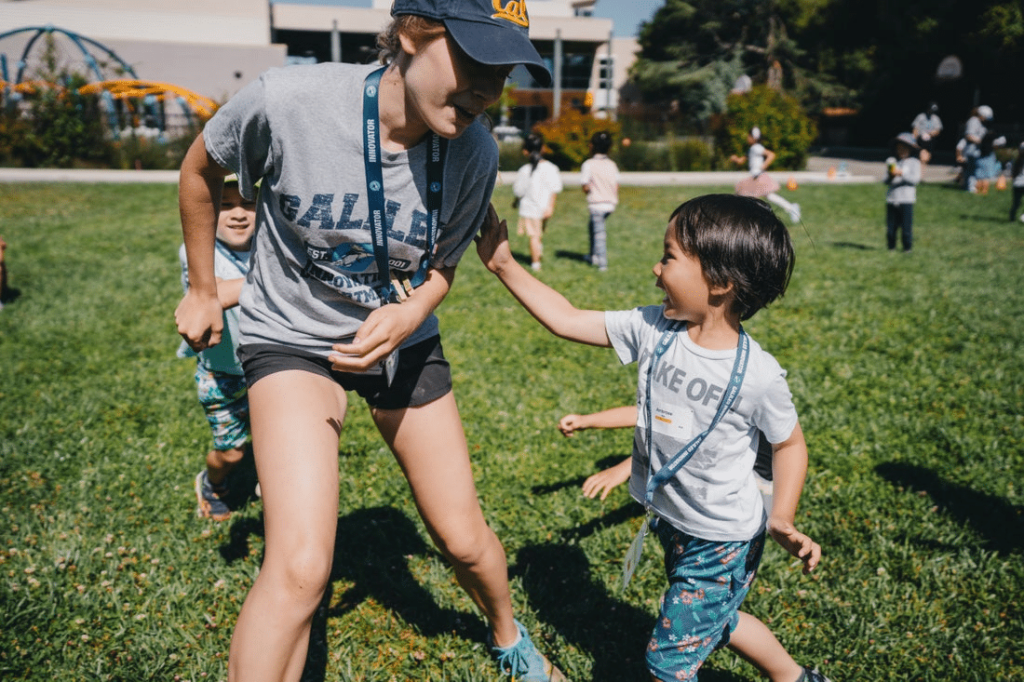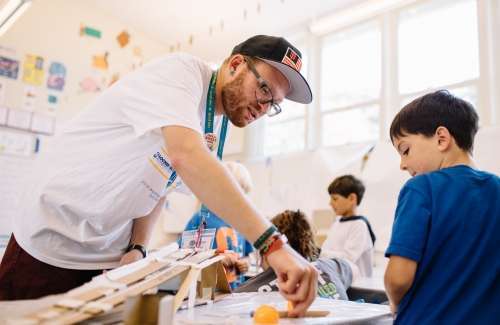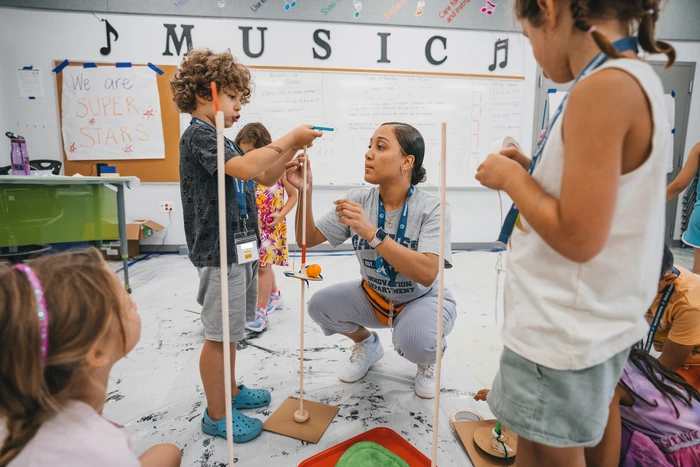This blog post is adapted from a presentation by Marie McDonald, Galileo’s VP of Communications & Southern California Operations. You can watch the full video here or check out the related posts for more on raising empathetic kids.
—
Empathy is the umami of skills: hard to define and tricky to teach.
We know that it begins to form as early as two years old, when toddling little people begin to recognize the feelings that others have, even when they’re not experiencing those feelings themselves. We know that empathy is a practice. It grows over time, and it’s complex. Empathy is at its best when we recruit a variety of tools to employ it; including observation, listening, imagination, and communication. And we know that, as with so many other things, caregivers are the first teachers of empathy that children look to.
But how, exactly, do we guide kids in learning this hard-to-pin-down skill? Here are six ways to teach the practice of empathy through everyday family life.
#1: Keep it curious
My daughter is seven and she will not stop moving. When I’m talking to her about getting her shoes on, what she wants for dinner, or an argument she had with her brother, she’s usually upside down—literally. When she sits in my lap to snuggle, she slams me in the face with the back of her head and crushes my legs with her constant movement.
My instinct in these moments is to tell her, for the love of everything dear to me, to sit still. But what about if I ask what this is like for her first? What if I get curious?
When I do, I realize that she’s breaking things and moving constantly because my schedule has been too busy to make sure the kids are getting exercise every day. Ooooooh. My annoyance quickly transforms into empathy and action. Instead of correcting her, I schedule exercise for the kids. I’m so glad I got curious.
Before we can teach our kids to see from someone else’s perspective, we need to be ready to see from theirs. We can start by constantly asking ourselves, what is this like for them?
#2: Listen to understand
How much do we try to fix, dismiss, defend, lecture, or explain when our kids share how they’re doing? How much do we invalidate? When we really slow down to notice, it might be a lot of the time.
Maybe we can all take a moment to remember what that feels like. Think of the last time you shared something vulnerable, or sensitive, or just something you really cared about with someone and had them respond by telling you that you misread the situation? That you’re wrong because they had a different experience? That you should really think differently about it, or that you just don’t make sense. Not great, right? And it’s no different for our kids.
Then this temptation rears its head, we can practice and teach empathy by being great listeners.
When kids share, pause. Before you invalidate, fix, defend, or lecture; before you say all of the reasons why we can’t, why that’s an unreasonable request, why they need to be quiet or why you don’t have time: pause.
Stop what you’re doing and get down on their level to show them they are important and that you’re listening. When you do this, you’re teaching them to value others too.
Get into that curious mindset. Can you acknowledge what they’re saying and do one of the following things?
- Repeat back what they say, no matter how much you want to correct it. (Ex: I really want to do that now! “You really want to do that now.”)
- Work to understand. (Ex: “Tell me about why it’s so important to you to do it right now.”)
- Ask follow-up questions. (Ex: “Can you give me an example?”)
#3: Watch to notice
Teach your kids to watch, notice, and care for the people and things around them by watching and noticing them yourself. As your kids go through their day, notice what they like, what they try, what is hard for them, what they think is funny, what they do with downtime, and what they value. Say it out loud. Watch how they respond.
#4: Use those non-violent words
When kids are speaking, they sometimes share hurtful things. When my kids do that, my husband and I seize the opportunity to teach non-violent communication by sharing an idea for what they might choose to say instead. That’s a great first step, and we can follow it up by teaching them how to assess for themselves.
Deborah Lewallen, a marriage and family therapist, recommends these three questions that you can ask kids about what they choose to say to others:
- Is it true?
- Is it necessary?
- Is it kind?
#5: Teach through Disagreements
I once heard that when you have one kid you’re a coach, and when you have two you become a referee. To me, that’s as funny as it is poignantly on the mark. I’ve heard a lot of parents share that teaching their kids to be good to their siblings and friends is their biggest challenge on the empathy front.
One thing that’s helped me as a parent/referee is encouraging my kids to share their feelings with one other, instead of always depending on adults to resolve conflicts for them. It might look a little something like this:
Kids: My brother said something that hurt my feelings!
Me: Did you talk to him about it?
This is usually not the end of the conflict, but rather one step in the conflict resolution process.
Share the floor.
When you’re reffing the latest dispute, set the expectation that each person gets a chance to share their experience—even the one who was “in the wrong.” When you do this every time, kids are more likely to get used to listening to each other, because they trust that they’ll have a chance to share too.
Get to the root.
When we create a repercussion for a behavior without seeking to understand why the behavior occurred in the first place, we are addressing the symptom, not the cause. More importantly, we are not teaching our kids what to do differently next time. If my three-year-old son hits his seven-year-old sister, it’s probably because he was frustrated by not being as strong or able as she was. Or maybe he’s tired, which will also help me identify that I need to adjust his sleep.
Prompt perspective-sharing.
Practicing empathy can be hard work for kids, and sometimes a little reminder can go a long way. Try asking questions like, “How do you think they felt when that happened?” to teach our kids to put themselves in the shoes of another person.
When it’s time to say sorry
Apologies are great, but it’s not always realistic to expect total forgiveness at the end of a dispute. We can teach kids to use authentic and true responses by showing them that saying ”thank you” is just as valid as “that’s okay” or “I forgive you.”
While we’re at it, let’s teach our kids to go beyond an apology and ask what they can do to repair the harm done. Make the action something that’s related to the problem. That might sound like, “Can I get you an ice pack?” or, “Can I tape the paper that I ripped?”
#6: Read between the lines
When we’re grumpy, it’s usually because we’re stressed or tired. When we’re impatient, it might be because we haven’t had time for the self-care that balances us. It’s the same for kids. We can teach our kids empathy by caring more about them than their mistakes. Here are a few things I do with my littles at home:
Look for the reason behind the reason
When my kids are disproportionately sad, angry or out of sorts at home, I look for some underlying problem. Did they not sleep enough, eat enough, or get enough attention? Has their rhythm changed? Do they miss their friends? Are they sensing stress from other family members?
Do you need a hug?
Even if my kids do something like hit, yell, or act out, I always offer a hug. Even if my eventual goal is to create a consequence or have a hard conversation, I teach them that love doesn’t go anywhere when we make mistakes.
Need some space?
We all need some space sometimes to breathe, clear our minds, feel our feelings, or just take a break from the people around us. We can teach our kids to do that for themselves and others by offering it up.
Look out for the next installment of this four-part series, which will focus on how to make empathy a downright blast through gamification. Until next time!
—
Sarah McDonald is Galileo’s VP of Southern California Operations. When she’s not heading up camp operations, Sarah loves to write, paint, and adventure with her fam.





